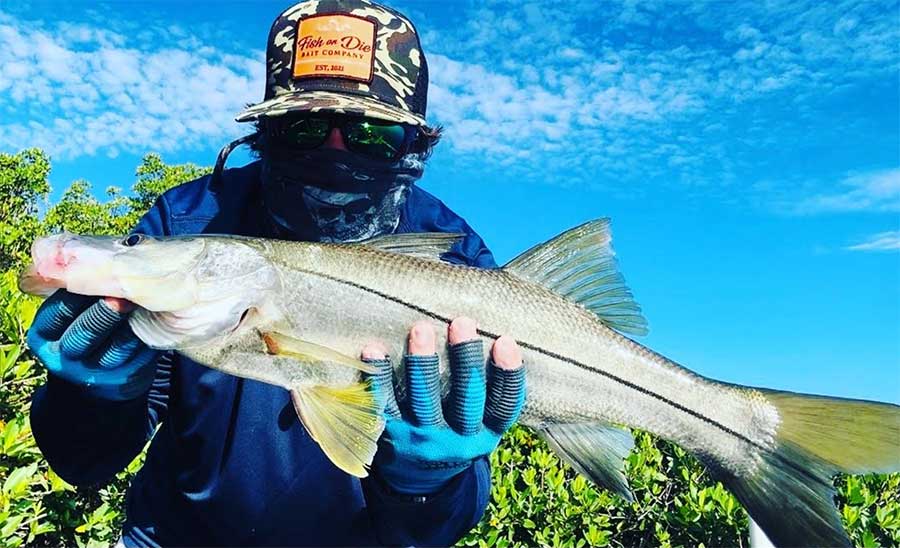
Sebastian Inlet State Park Kayak Fishing (Part-II)
Happy Monday, Spacefish!
I hope everyone had a great week. I’m back today to pick up where we left off talking about Kayak Fishing Sebastian Inlet State Park (see part I here). I talked to you about enough non-fishing stuff last week, so without further ado, let us dive right in!
Where To Launch
In case you didn’t catch last week’s report, I will include the information again. There is a designated kayak/canoe launch area within the Sebastian Inlet State Park. It shares the same parking area with the boat ramp, which is on the south side of the inlet. There is a state park entrance fee, and you can enter the park on both the north and south side of the inlet, but to launch a boat or kayak, you will want to enter the park on the south side, then drive west until you essentially run out of paved driveway. The boat ramp is on the southside of the southside, and the kayak/canoe launch puts you straight into the actual inlet, for those familiar it is just west of the “T-Dock.” Here is the address: 14251 Florida A1A, Vero Beach, FL 32963.
Where to Fish (Outside of the Inlet)
So last week, I covered the “inlet.” Today, it’s about fishing around, and outside of the inlet. So when I returned I launched from the same spot, but I am sure that if you look hard enough you can find other areas, there is a kayak launch that can be reached from A1A just north of the actual inlet (it’s about a mile and some change north), but they don’t open until 9 am, and this time of year, I’ve got to be on the water when the sun is coming up, usually 9 am is the time that the bite and the activity slows down, and/or becomes tough (more to come on that). But anyway, I launched from the west side of the inlet, and went due north. It was a bit of an adventure crossing the inlet, even pre-dawn. The inlet is not, by any stretch of the imagination a “no wake zone” in fact, it is quite the opposite. So if you’re wanting to try this out, go for it, but be warned, in a kayak I felt like George Costanza playing “frogger” across a busy Manhattan Street. If you know, you know.
Once I cleared the inlet, I got on my “track” and started fishing. I would explain it all to you, but I think I will just insert a picture instead.
Now one last thing I’d like to add about “Where to Fish” once in the zone there are a few things I would look for. Because once you are back in this mangrove labyrinth everything can start to look the same, but let us not forget that 90% of the fish are in 10% of the water, they are fish, which means they can swim, which means they will move around. They are living creatures so they will move to find food, stay comfortable, and to find areas that lower the chances of being eaten by a Dolphin. So, that being said, when I am back there I am standing up in the kayak looking for signs of life. Let’s talk about the 3 B’s – bait, birds, and blow ups. Chances are if you are seeing one, or more of the 3 B’s, then you have a good chance of finding a fish to cast to. As the sun gets higher in the sky, you will still see birds and bait, but not as many blow ups. The fish will start to look for structure and shade. Now the X-factor to me is moving water. Even though the tide does move in and out of the inlet, back amongst these mangroves, I was still looking for wind blown water more than tidal flow, part of my rationale for that was oxygenation. When water is hot, 90+ degrees hot the oxygen will dissolve, therefore fish will seek shade, but specifically seek shaded spots with water being pushed in by the wind.
Think about this, why do bait buckets need bubblers? Have you ever put a ziploc bag full of ice to keep the water cool and keep your bait alive longer in the summer? What do you do if your batteries die, and you don’t have a replacement? Put your hand in there, and stir the water, right? This is why finding windblown points and shorelines in the summer is crucial! The wind could be blowing in a different direction when you go here, or you could find yourself fishing a totally different spot, but the same formula applies!
Topwater
Summer patterns, I generally like summer fishing patterns. Especially early summer, Late May-Early July. By the time we get into mid to late July we start getting into the “dog days” of summer fishing, when the water temps get up in the 90’s, and the heat and humidity are just crushing, fishing can become a grind as well, but the topwater bite remains very strong from sunrise until about 8:30-9:00 am. Once the sun is fully up and over any shade or sun blockages the mangroves can create it becomes tough to get Snook to play. The topwater that I have really been catching a lot of fish on is the Rapala Skitterwalk (SW-08) in Silver Mullet. I replaced the trebles with VMC Single In-Lines and fish this bait on my Empire Fishing Rods “Throne” – a 7Ft Medium Heavy Casting Rod with a Bass Pro Shops baitcasting reel, 20 pound braid, with a 50 pound Mono leader tied with an FG knot. I tie the leader to the bait with a non-slip loop knot to give the bait increased “walking” action.
Dawn is definitely the time of peak activity and fish are on the move looking to eat. In the last month I have caught a plethora of Snook, Jacks, Sea Trout, with a few Juvenile Tarpon and Redfish mixed in as well. In the morning I fished the mangrove islands north of the inlet. I got as far away from the mangroves as I could, and casted as close to the mangroves as I could, walking the bait as slow as I could back to me. The key for catching Jacks and Trout is to look for feeding activity on the surface, usually further away from the mangroves than Snook and Redfish like to hang out. My topwater Snook and Redfish have come off of good accurate casts, which is why I prefer the baitcaster to a spinning combo, close to the shoreline, giving the bait good walking action but keeping it in the strike zone as long as possible. Even in low light conditions Snook are going to hug tight to structure and will come out for this bait because of the surface level disturbances being made by the walking action and the internal rattle. Here are a few of the catches from the mangrove labyrinth north of the inlet.
Swimbait/Paddle Tail
Once the topwater bite dies off, it becomes a subsurface game from here on out. If you have been reading my reports for the last year or so, it is no secret that I love a good paddle tail swim bait. My go to these last few weeks has been the Fish, or Die Minutemen in “Swampfox” which is a light silver with gold flake. This color has been fantastic. I like the swimbait because, for the most part it is a cast and retrieve bait, however, I have been fishing it more on a jighead with a casting set up, than going weedless. I have been using the Empire Fishing Rods “Royal” a 6’10 Medium Set Up, with an Abu Garcia baitcasting reel, 15 pound braid, tied to 30 pound leader. I use a 3/16 oz Z-Man Gold Trout Eye Jighead.
I fish this bait just like the topwater. I get as far back as I can, and cast it as close as I can. With a good inshore casting set up, you can make good accurate casts, dropping your bait right along, and in the case of overhangs, right under the bushes. Once it lands, I let it settle and “slow roll” the bait back to me, letting it hug the bottom and keeping it in the strike zone as long as possible. This is another great method for covering water and putting your presentations in as many places as possible. The Minutemen was designed to entice finicky Pennsylvania Smallmouth with an irresistible wobble on the slowest of retrieves, but as it turns out, works pretty well on lazy Snook in the July heat!
Weedless Jerk Bait
In these summer inshore patterns, my 3rd and final “play” is to go with a weedless and weightless jerk bait. One of the great mysteries of our time has to be this: Why is it called a “Jerk Shad” by inshore folks, and a “Fluke” by Bass folks? If anyone knows, please let me know, because I am perplexed to say the least. But be that as it may, I have really grown fond of this style of bait this summer. But as opposed to my favorite inshore colors of white, silver, off white, white with silver flake, silver with gold flake etc, I have fallen in love with a new color for this bait. Black and Gold!
I like to fish this style of bait deep into the mangroves, by going weedless and weightless these baits skip EXTREMELY well. They get really far back, which is where these finicky Snook are going to be when the sun is beating down. They like to lurk back in there and take it easy. They are not coming out and chasing down bait, so it’s nice to have a bait in the arsenal that can be put right in front of their face. Many of the snook I catch back in there are hitting this bait pretty quickly, oftentimes they’re engulfing it while it is skipping. Which does not surprise me, they look very similar to a panicked baitfish skidding across the surface in a panic.
Fish, or Die makes a really cool version of this bait called, The Warbird. It has a segmented body, it dives and darts with the slightest twitches, and has a fall that is irresistible to even the most hesitant and finicky predator. The only knock I can say about this bait, is that they come 5 to a pack, and with the wear and tear of beating the bushes and combat fishing Snook under the gnarly root system of the mangroves, you can run out of them pretty quickly. Which is why I always have Zoom Flukes as my backup. Pictured above is the Warbird in their custom black and gold color, called Midnight Run. The Zoom fluke is a classic Bass bait, that works really well under the mangroves, I also like the Bitter’s Skip Shad (exact same size and profile as the Zoom Fluke). I have really been digging the Golden Bream color from Zoom, which is their black and gold pattern. Pictured below.
For the Warbird, I like rigging on a BKK 2/0 Screw Lock Worm Hook, and with the Zoom Fluke I like rigging it with a 3/0 Gamakatsu EWG Worm Hook. The key to success with both of these baits is to get them as far back as you can, and give them light and subtle twitches, and allow them to stay in the strike zone, which in this case is under the mangroves as long as possible. I like to rig these on a spinning combo, for me it is a 7 Ft Ugly Stik with a Penn 3000 Series Spinning reel, 15 pound braid, and 30 pound fluorocarbon leader. I prefer the spinning set up because it is much more conducive to skip casting than a bait caster.
Conclusion
To wrap up this 2 part series, I had an absolute blast covering Sebastian Inlet State Park. I didn’t catch any trophy Snook when I went back into the mangroves. I think most of the big girls are out having a big spawning party on the beach and are at the mouth of the inlet. I have seen awesome pics on social media of big beautiful Snook being caught from the beaches, but if you like the quiet serenity of mangroves, and the backwater style of fishing, this is an area that I was able to go out and catch a good number of Snook, with some Trout and Jacks mixed in.
I hope everyone has a great week, school is starting back this week. I hope all the kids are ready, because I am not sure the teachers are, where did the summer go? Until next time!

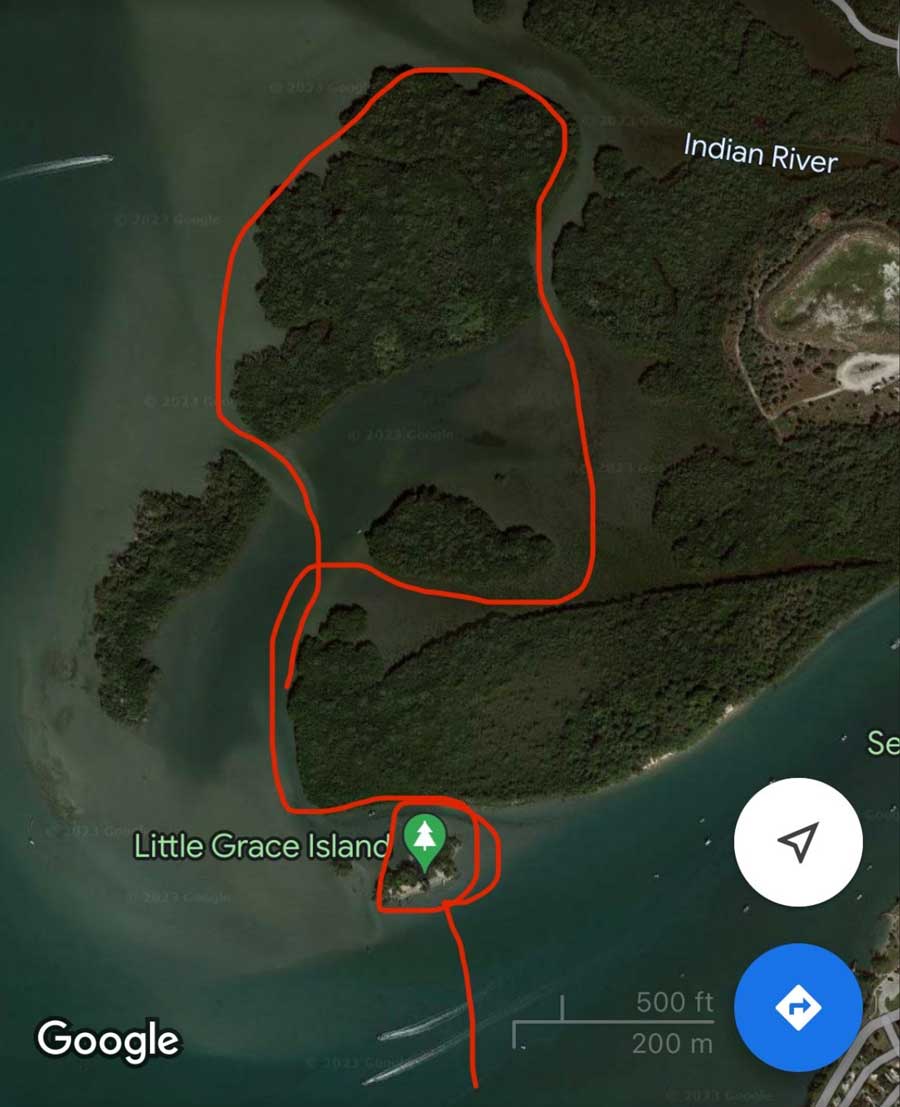
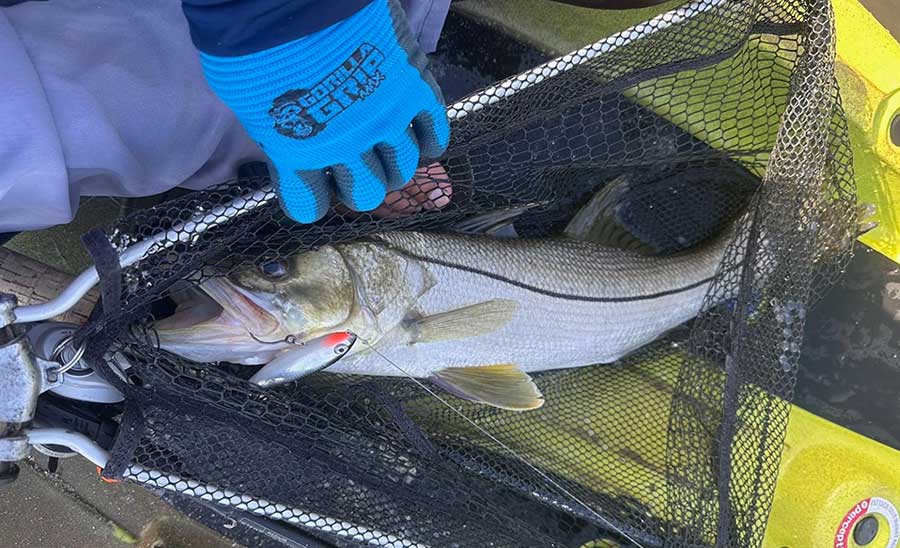
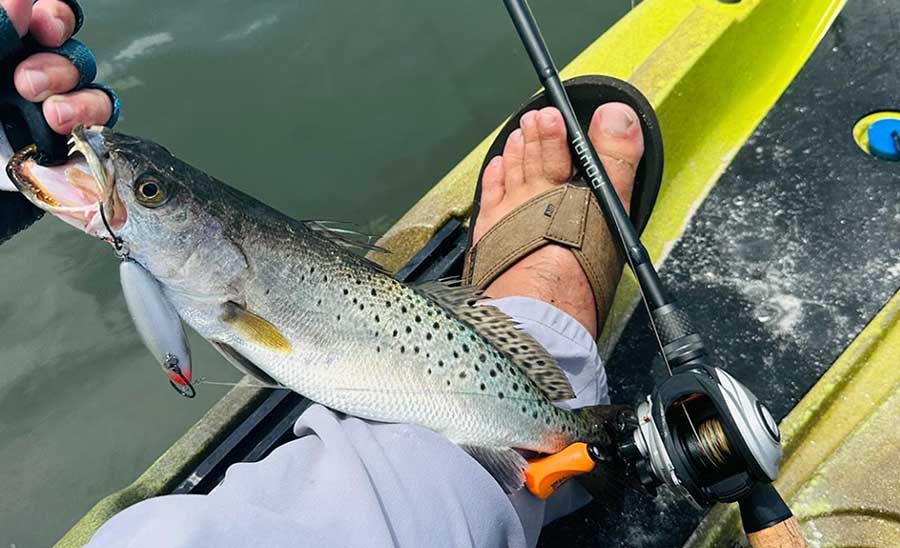


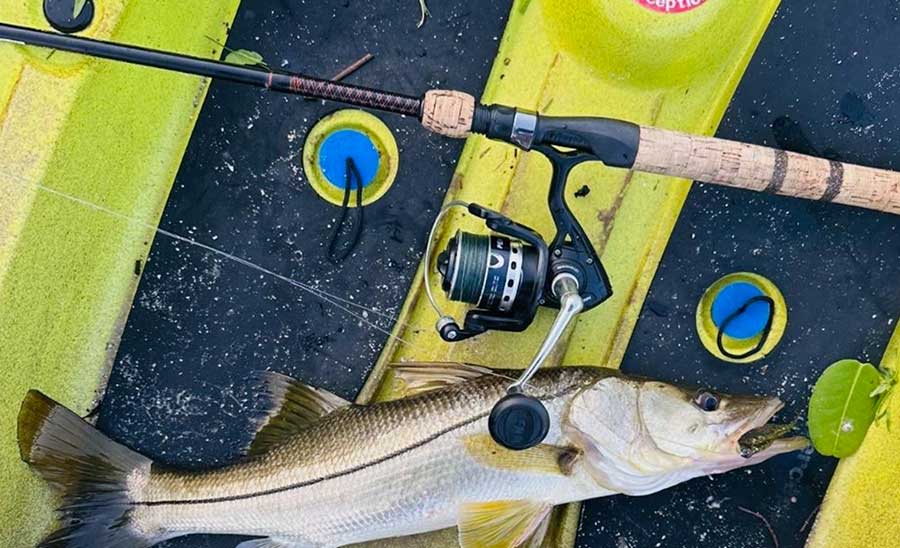

coach knox we should go fishing some time
Absolutely Noah! Did you go fishing any this weekend? I’ll see you in 6th period!